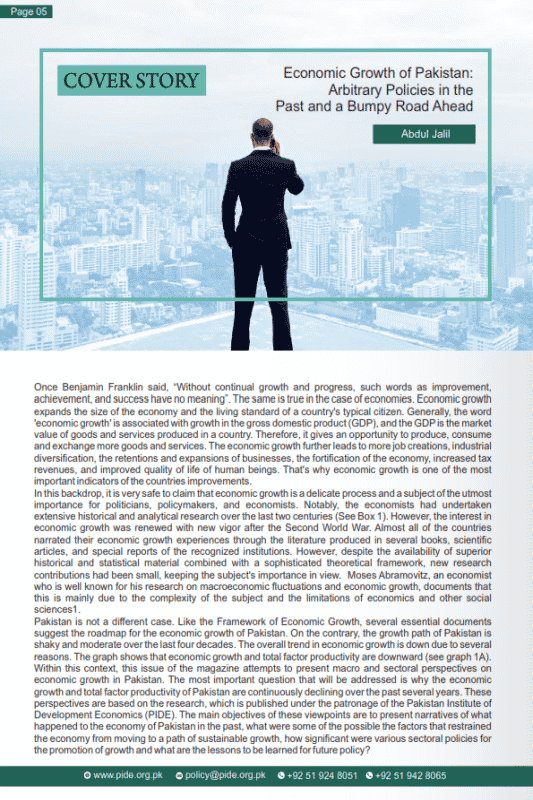
Pakistan Institute of Development Economics
- Home
Our Portals
MenuMenuMenuMenuMenuMenuMenu - ResearchMenuMenuMenuMenuMenuMenuMenu
- Discourse
- The PDR
- Our Researchers
- Academics
- Degree Verification
- Thesis Portal
- Our Portals
Economic Growth of Pakistan: Arbitrary Policies in the Past and a Bumpy Road Ahead
Once Benjamin Franklin said, “Without continual growth and progress, such words as improvement, achievement, and success have no meaning”. The same is true in the case of economies. Economic growth expands the size of the economy and the living standard of a country’s typical citizen. Generally, the word ‘economic growth’ is associated with growth in the gross domestic product (GDP), and the GDP is the market value of goods and services produced in a country. Therefore, it gives an opportunity to produce, consume and exchange more goods and services. The economic growth further leads to more job creations, industrial diversification, the retentions and expansions of businesses, the fortification of the economy, increased tax revenues, and improved quality of life of human beings. That’s why economic growth is one of the most important indicators of the countries improvements. In this backdrop, it is very safe to claim that economic growth is a delicate process and a subject of the utmost importance for politicians, policymakers, and economists. Notably, the economists had undertaken extensive historical and analytical research over the last two centuries (See Box 1). However, the interest in economic growth was renewed with new vigor after the Second World War. Almost all of the countries narrated their economic growth experiences through the literature produced in several books, scientific articles, and special reports of the recognized institutions. However, despite the availability of superior historical and statistical material combined with a sophisticated theoretical framework, new research contributions had been small, keeping the subject’s importance in view. Moses Abramovitz, an economist who is well known for his research on macroeconomic fluctuations and economic growth, documents that this is mainly due to the complexity of the subject and the limitations of economics and other social sciences1.



